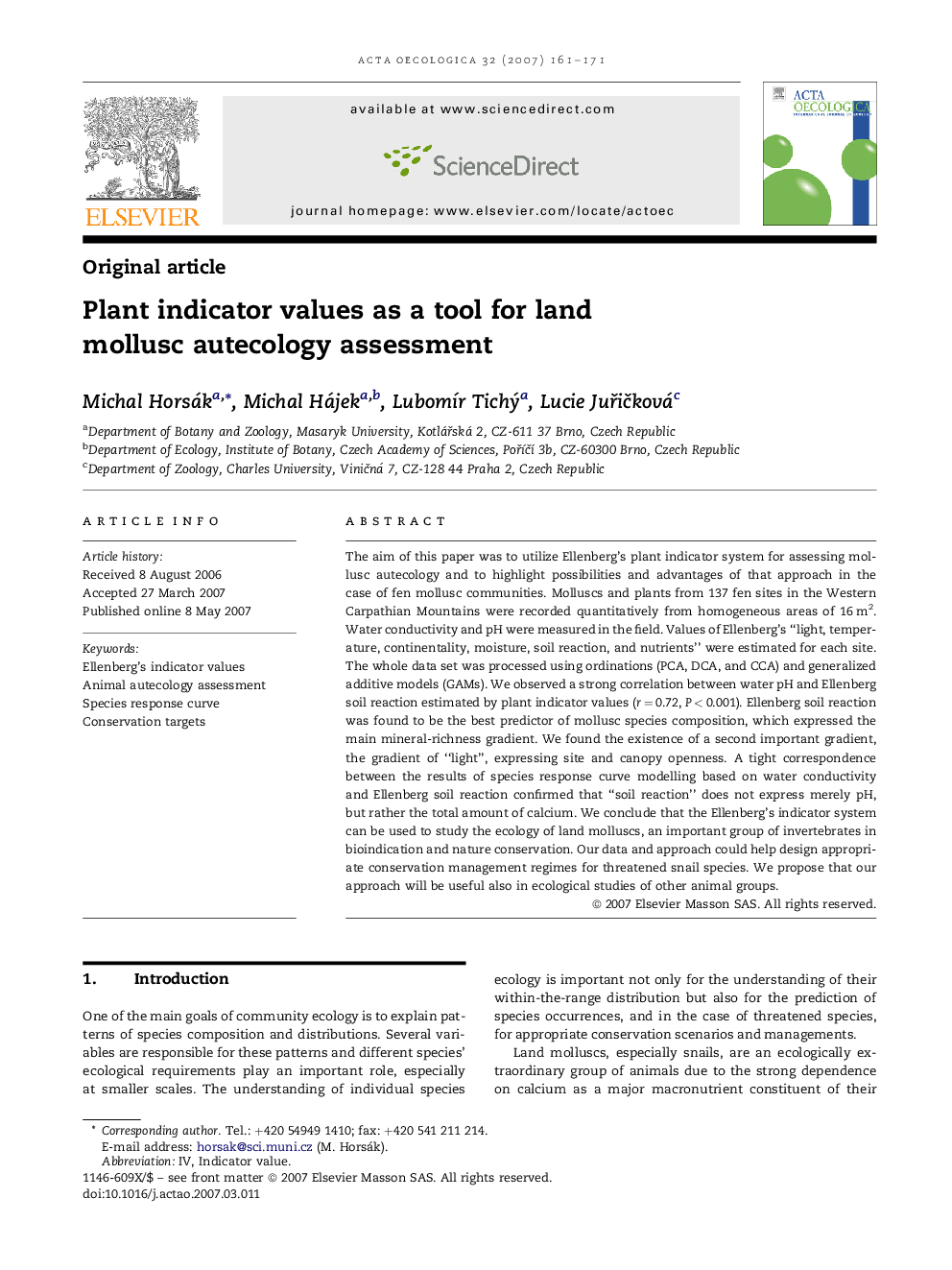| Article ID | Journal | Published Year | Pages | File Type |
|---|---|---|---|---|
| 4381535 | Acta Oecologica | 2007 | 11 Pages |
The aim of this paper was to utilize Ellenberg's plant indicator system for assessing mollusc autecology and to highlight possibilities and advantages of that approach in the case of fen mollusc communities. Molluscs and plants from 137 fen sites in the Western Carpathian Mountains were recorded quantitatively from homogeneous areas of 16 m2. Water conductivity and pH were measured in the field. Values of Ellenberg's “light, temperature, continentality, moisture, soil reaction, and nutrients” were estimated for each site. The whole data set was processed using ordinations (PCA, DCA, and CCA) and generalized additive models (GAMs). We observed a strong correlation between water pH and Ellenberg soil reaction estimated by plant indicator values (r = 0.72, P < 0.001). Ellenberg soil reaction was found to be the best predictor of mollusc species composition, which expressed the main mineral-richness gradient. We found the existence of a second important gradient, the gradient of “light”, expressing site and canopy openness. A tight correspondence between the results of species response curve modelling based on water conductivity and Ellenberg soil reaction confirmed that “soil reaction” does not express merely pH, but rather the total amount of calcium. We conclude that the Ellenberg's indicator system can be used to study the ecology of land molluscs, an important group of invertebrates in bioindication and nature conservation. Our data and approach could help design appropriate conservation management regimes for threatened snail species. We propose that our approach will be useful also in ecological studies of other animal groups.
